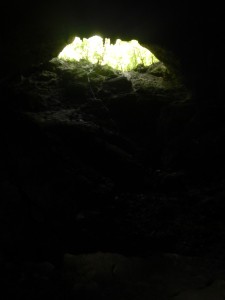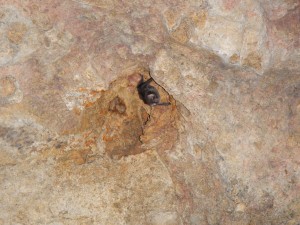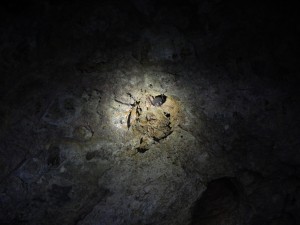Hi Blog,
Today was a very exciting day! The day, as always, started off with a delicious breakfast from Angie! Apparently, there were a family of howler monkeys in the tree at the edge of the clearing that a bunch of people got to see, but I did not, which I’m a little sad about. But I did get to see some in the Caracol on day 2 which was cool.
After breakfast, we went to the Chiquibul cave, which was super cool! Surprisingly, the cave entrance was directly outside of clearing, so it was a very short walk. The entrance was much wider than I expected, and walking into the cave and actually being in the cave was so surreal. It was significantly cooler (literally and figuratively), and the cave was hazy, which added to the surreal effect.

It was really cool to see the geologic formations, especially since the baby stalagmite appeared sticky, which is apparently calcium! I thought it was interesting how the tour guide pointed out to not touch the geologic formations, since the human imprint will stop the growth of the geologic formations. It made me aware of the disruptive effects that humans can have, even if the actions seem really minuscule.
Although I did not directly have any mammal sightings, I was still able to see holes in the ceiling of the cave, which the KARST team explained were the roosting sites of the various species of bats in the area! No picture, since we were not allowed to take any photographs within the caves in order to minimizing looting risks.
After the cave, we went on a hike to collect our pitfall trap samples, which was done quite efficiently since we had been on the paths before and had annotated thoroughly in our field notebooks of their locations. Then, we had lunch which was chicken, rice and beans, and plantains. These were yummy as usual! After lunch, we went right back to work to analyze our pitfall trap samples and then present to Dr. Evans and Dr. Solomon immediately after. My vial for the ground sample had a huge cockroach on it, which was effectively identified by Emily.
We went hiking to the bird tower to catch the sunset, and the view was absolutely breathtaking. The journey there was breathtaking as well (literally), but I digress… The tower and ladder were a little shaky though which was kind of scary… I was physically exhausted and drenched in sweat, but I was so glad to have persevered.

After we returned, we had dinner — chick peas, fried cucumbers, and eggs. After dinner, I finally had my first presentation, which was my 30 minute topic lecture about Visual and Auditory Communication in Rainforest Animals. I was a little nervous, since this was the longest presentation I have ever done, but I think it went fairly well, and I’m glad to have it out of the way. I have my mammals taxon ID briefing presentation tomorrow though, so I’m excited/nervous for that.
Tomorrow morning, at 5 AM, a small group of us are planning to go to the bird tower to see the sunset. I’m going to try really hard to wake up, but we will have to see tomorrow. Stay tuned!









